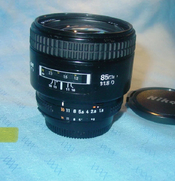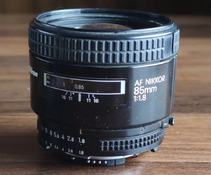Thanks. I was planning to use it on Nikon F90x, so what is important to me is the optical performance and AF speed. I think I am OK to go for non D since it is somewhat cheaper. I just bought this F90 body and want to test it with a decent AF lens. I am currently using FM3a and all my lenses are manual.
This lens was introduced in 1988 as Nikkor AF 1.8/85. Without the "D" (= distance) function.
The distance function was a significant improvement of the Matrix metering, as the distance and position of the focussed object was integrated in the metering calculation. That is very useful in several different situations, like objects arranged in the "rule of thirds", when the main object is not in the center of the frame. It is also very useful and improves results when flash is used.
The "D" function was introduced in 1992 with the Nikon F90 (N90). From that date on Nikon upgraded over the years all their lenses with the additional D function.
The optics of the AF Nikkor 1.8/85 and the later upgraded AF-D 1.8/85 are identical. It is a very good lens, by the way. I am using it for a very long time.
As you have the F90X I would go for the D version, because with the F90X you use the improvement in metering.







